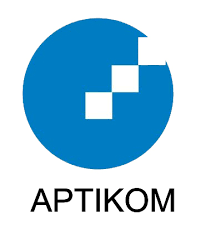The Development of Find The Object Game Application as The Media of English Vocabulary Learning for Second and Third Grades of Elementary School
Abstract
English is the language of international communication, which is why most countries in the world learn it. Therefore, we need to understand and be capable of communicating in English. Today’s English learning is mostly delivered by a lecture method. Moreover, there is no English vocabulary learning media in the form of application. Therefore, this research aims to develop a game application called “Find the Object” to help elementary school students learn English vocabulary by making the learning process more fun and interesting. The pre-test, post-test, and poll results revealed that this game significantly succeeded in increasing the English vocabulary of elementary school students. It was proven through the values of tests tending to increase after playing this game, and students felt more interested in learning English vocabulary.
Keywords
Full Text:
PDFReferences
M. P. Lewis, G. F. Simons, and C. D. Fennig, Ethnologue: Languages of Asia. SIL international, 2014.
I. Fajriyah, “Peningkatan Penguasaan Kosakata Bahasa Inggris Melalui Penggunaan Media Kartu Gambar Pada Siswa Kelas II SD Muhammadiyah Purwodiningratan 2 Yogyakarta [Improvement of English Vocabulary Mastery through the Use of Picture Card Media in Class II Students of SD Muhammadiyah Purwodiningratan 2 Yogyakarta],” Yogyakarta: Universitas Negeri Yogyakarta, 2013.
F. N. Hamidah, D. Yanuarmawan, and F. Sukya, “Pemanfaatan e-Dictionary Berbasis Android pada Vocabulary for Beginner dalam Meningkatkan Kualitas Pengajaran di Mosaic English Training Center Kampoeng Inggris Pare [Utilization of Android-Based e-Dictionary in Vocabulary for Beginner in Improving Teaching Quality at Mosaic English Training Center Kampoeng English Pare],” Jurnal ABDINUS: Jurnal Pengabdian Nusantara, vol. 3, no. 2, pp. 365–375, 2020.
Y. Yulianto, “A Contrastive Analysing On Diction Vocabulary Using And Grammatical Aspect Of Students’arabic And English Public Speaking Text (A Case Study At The Third Grade Of Mts Al-Mizan Islamic Boarding School Rangkasbitung Lebak Banten),” 2018
A. Adhayani And D. Tresnawati, “Pengembangan Sistem Multimedia Pembelajaran Iqro’ Menggunakan Metode Luther [Iqro 'Multimedia Learning System Development Using Luther Method],” Vol. 12, No. 2, P. 7, 2015.
D. George, SPSS for windows step by step: A simple study guide and reference, 17.0 update, 10/e. Pearson Education India, 2011.
J. Pallant, SPSS survival manual: A step by step guide to data analysis using IBM SPSS. Routledge, 2020.
D. A. Fitts, “Commentary on ‘A review of effect sizes and their confidence intervals, Part I: The Cohen’s d family’: The degrees of freedom for paired samples designs.,” The Quantitative Methods for Psychology, vol. 16, pp. 1–35, 2020.
R. C. Machado et al., “Solid sampling: advantages and challenges for chemical element determination—a critical review,” Journal of Analytical Atomic Spectrometry, vol. 35, no. 1, pp. 54–77, 2020.
I. Halilaj, Y. van Wijk, A. Jochems, and P. Lambin, “The growing significance of smartphone apps in data-driven clinical decision-making: Challenges and pitfalls,” in Artificial Intelligence in Medicine, Elsevier, 2021, pp. 173–182.
DOI: https://doi.org/10.18196/eist.126
Refbacks
- There are currently no refbacks.
Editorial Office:
EMERGING INFORMATION SCIENCE AND TECHNOLOGY
Department of Information Technology, Faculty of Engineering,
Universitas Muhammadiyah Yogyakarta.
Jln. Brawijaya Tamantirto Kasihan Bantul 55183 Indonesia
Telp:(62)274-387656, Fax.:(62)274-387656

